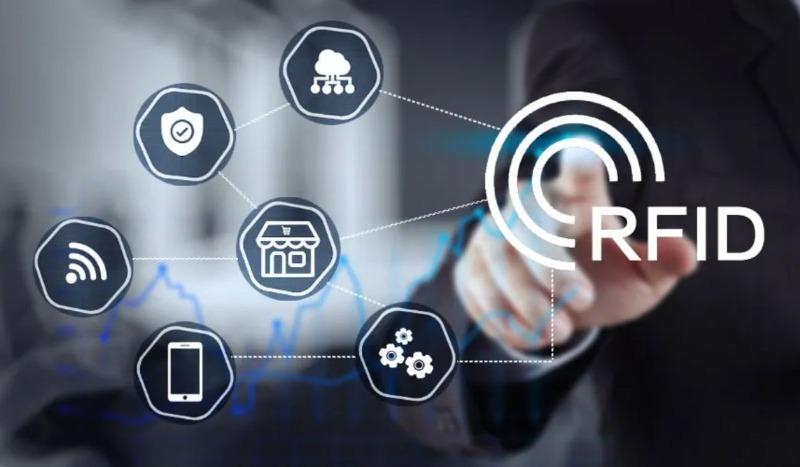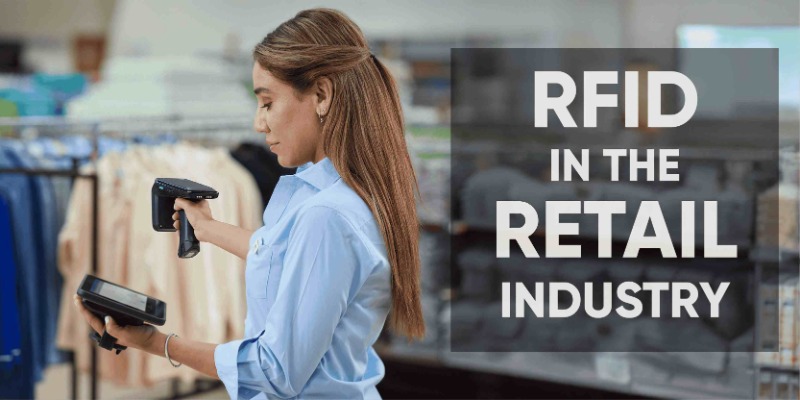Integrating RFID technology into the retail industry enables traceability, data-driven decision-making, and improved operational efficiency. This article explores the application of RFID in reverse logistics and its impact on sustainability and waste reduction.
In retail, RFID technology can automate inventory counting, inventory location, theft detection, and even cashierless checkout. Unlike barcodes, RFID uses radio waves, enabling batch scanning and real-time data collection.
Reverse Logistics Explained
Reverse logistics refers to the process of returning merchandise from its typical endpoint through the supply chain for return, repair, remanufacturing, recycling, or disposal. For retailers, this includes returns, product recalls, recycling, and the management of unsalable merchandise.
Reverse Logistics Challenges in Retail
The returns process can be labor-intensive, error-prone, and lack visibility. Returned merchandise can be misplaced or lost, damaging its value and brand image. Product returns also have a significant environmental impact. Therefore, efficient reverse logistics is crucial for reducing operational costs and achieving sustainable development.

Enhanced Visibility and Traceability
RFID's unique identification combines item-level accuracy with rapid scanning capabilities, solving traceability challenges. Each returned item can be instantly identified and tracked in real time.
Automated Returns Processing
For large-scale returns, RFID tags can reduce manual labor and human error. Automated data flows ensure accurate records for audits, compliance, and claims.
Status Verification and Sorting
RFID, integrated with machine vision or sorting systems, automates returns processing: whether the item is being refurbished, resold, donated, or recycled. This reduces secondary waste.
Case Study: Decathlon's RFID Returns Process
Global sporting goods retailer Decathlon will have RFID-enabled over 95% of its inventory by 2021. Decathlon's innovation team stated that RFID can automatically relabel and sort returned goods, thereby reconsolidating returnable merchandise.
Asset Lifecycle Management
RFID helps better manage the entire lifecycle of products. Retailers can precisely track when, where, and how often products are sold, returned, or reused, optimizing replenishment processes and limiting markdowns. RFID also enables waste to be recycled or reused, aligning with circular economy principles.
Supporting Closed-Loop Supply Chains
A closed-loop supply chain aims to design products for reuse, refurbishment, and recycling, minimizing landfill waste. RFID technology is a key enabler of this goal. Tagged returns can quickly enter the refurbishment process, and systematic recordkeeping ensures that components meet safety and quality standards.
Real-Time Data Reduces Overproduction
A 2020 Accenture study found that in a test retail environment, item-level RFID reduced out-of-stock rates by 50% and excess inventory by 25%. Waste can be further reduced if returned items are tracked and sorted for resale rather than disposal.
Smart Expiration Management in Food Retail
Walmart has begun piloting RFID technology to track produce, significantly reducing shrinkage. Retailers can adjust promotions, reallocate inventory, or donate goods, reducing waste and improving community relations.
Reducing Product Recalls and Environmental Impact
RFID can track products at the batch or item level, facilitating targeted recalls and minimizing unnecessary product destruction.

IKEA and the Circular Economy
IKEA's "Circular Hub" program uses RFID technology to tag bulky items and refurbishable components, enabling retailers to track which products are returned, refurbished, and resold. This data-driven, closed-loop process helps improve product design, increase recycling rates, and promote sustainable development.
RFID-Driven Reverse Logistics and Sustainability Best Practices
Start with the Highest-Impact Use Cases
Initial RFID deployments should focus on categories with the highest return rates, highest waste rates, or key regulatory requirements. Apparel, footwear, electronics, and perishable goods are top priorities.
Leveraging Analytics for Continuous Improvement
The data generated by RFID in real time enables advanced analytics, including root cause analysis of returns, shrinkage tracking, and supplier performance monitoring. Use these insights to update purchasing, merchandising, and product design strategies to continuously reduce shrinkage.
Engage Stakeholders and Train Employees
Employee buy-in is critical to the success of an RFID project. Training employees, especially those responsible for returns and warehouse operations, ensures that the new system reaches its full potential.
Conclusion
RFID is rapidly becoming a vital component of forward-looking retail operations. As RFID costs decrease and its capabilities increase, the business case for adopting the technology continues to grow. By embracing RFID-driven innovation, retailers can position themselves as leaders in sustainability—resilient, efficient, and ready to respond to the evolving demands of customers and regulators.
Chat NOW
Scan to wechat :

Scan to Whatsapp :
